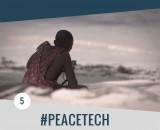Criminalized Power Structures
Two recent volumes by Michael Dziedzic are a welcome addition to our series of books on Peace and Security in the Twenty-First Century, because what he and his colleagues call criminalized power structures are little studied but invariably a key obstacle to the success of any peace process undertaken during or after a civil war or other period of intense political violence.
In this first volume, Criminalized Power Structures: The Overlooked Enemies of Peace, Dziedzic and his coauthors explore the contours of this increasingly important problem. It does so by first laying out what criminalized power structures are, and, more importantly, why they make lasting peace impossible to achieve.
Criminalized power structures are enduring corruption networks embedded within governments.
Then, his colleagues explore how those dynamics have played themselves out in some of the countries where these forces have been at their most toxic, including: Iraq, Afghanistan, the Democratic Republic of the Congo, Sierra Leone, Guatemala, Haiti, Bosnia, and Kosovo.
His second volume, Combatting Criminalized Power Structures: A Toolkit, takes that analysis one step further by exploring what domestic and international actors can do about them. Some of the “tools” reflect the concerns of traditional security actors by focusing on the role of sanctions, policing, accountability, and the like. Others grow more out of the work of peacebuilders and others in the NGO community, such as the role of civil society, enduring cultural norms, and the media. In short, one of the things that makes this book unique is the fact that it draws on a variety of academic disciplines and “real world” practices in reaching its conclusions.
Working with Dr. Dziedzic on these two volumes has been particularly valuable for me because, although we are both political scientists as well as peacebuilders, we took very different routes in combining the two fields of study. Unlike me, Dziedzic spent the first part of his career as a United States Air Force officer and gradually moved into the peacebuilding field as the Senior Fellow for Peace Operations at the National Defense University. Subsequently, he joined the staff of the United States Institute of Peace, where we met. In the decade since, we have informed each other’s work to the point that he has adopted the language of human security into his work just as I have used national security concepts in my own.
In other words, these two volumes are living proof that people from the two worlds we come from cannot only work together, but that we have to if we are to make any progress in dealing with criminalized power structures, and any of the other issues that the authors in this series have examined.

